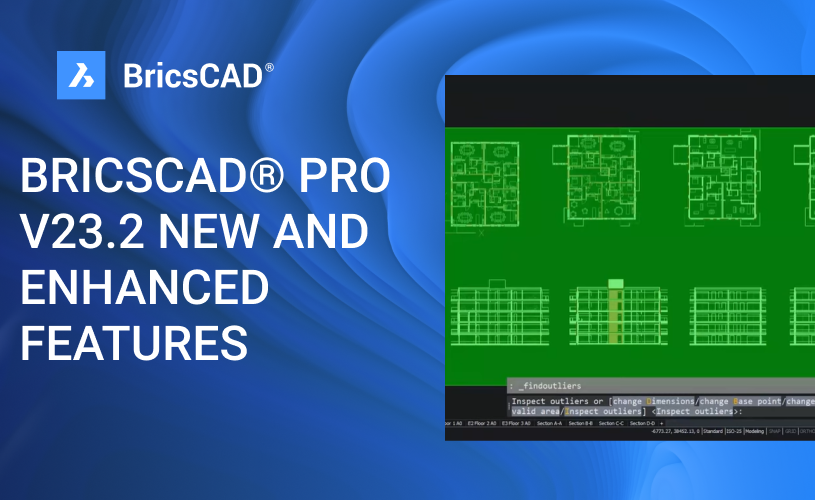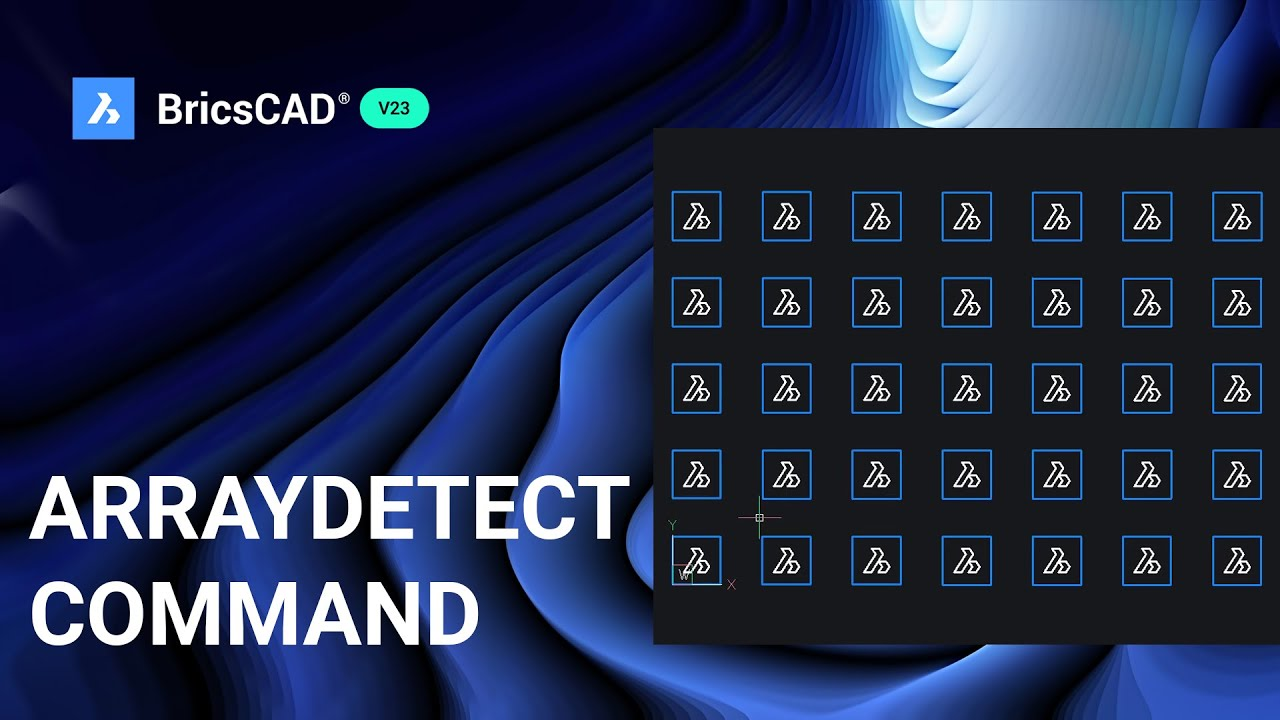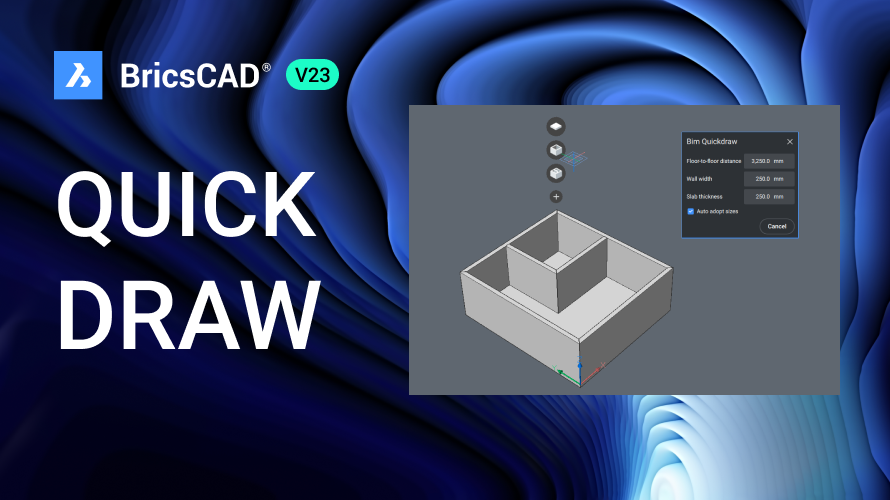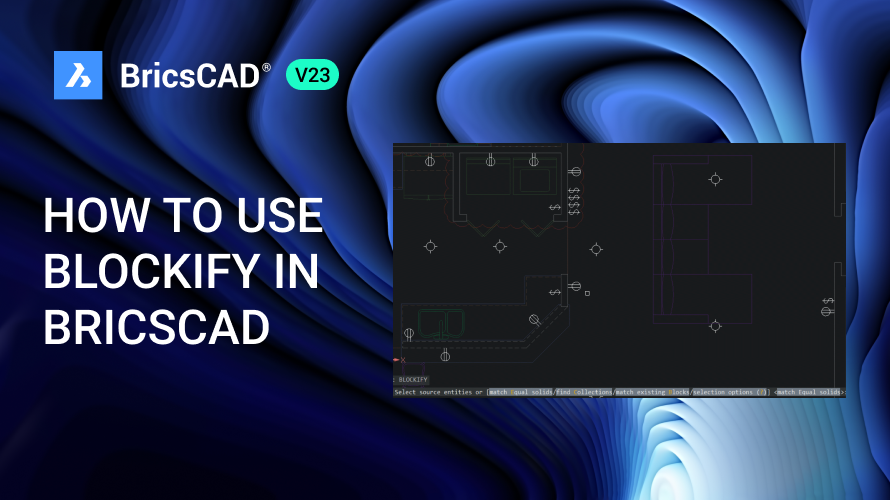BricsCAD® V23.2 is here, and it comes jam packed with new features and enhancements that make CAD design even easier and more intuitive. Let's take a look at some of the updated features, and how to use them!
New QT Based Ribbon:
One of the biggest updates to BricsCAD V23.2 is the enhanced QT-based Ribbon. While this feature is optional for now, it will become the default in V24. The new ribbon is more modern, with a search bar and comfortable icon spacing. It also highlights commands from other ribbons when you search for a term.
How to use it:
- Type "USENEWRIBBON" command in the command line.
- Set the value to 1 and press Enter.

- The enhanced QT-based Ribbon will be enabled.
- Use the search bar to find commands.
- Commands with the search term will be highlighted not just on the current ribbon but on other ribbons as well.
- To switch between layout styles, ribbon styles, panel systems, and to turn the new ribbon on/off, click on the interface settings option.
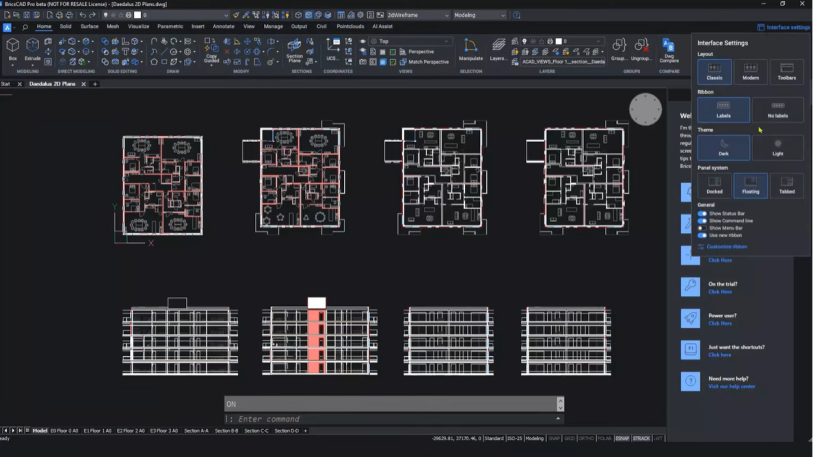
Enhanced OPTIMIZE user interface:
The OPTIMIZE command UX has been completely reworked, with input options that are more useful, intuitive, offer greater control, and are easier to understand. The new UX features information icons that explain options more clearly and the visual feedback when drawing a gap tolerance has been enhanced, making it easier to understand what’s happening in your design.
How to use the OPTIMIZE command:
- Use the OPTIMIZE command UX by typing “_optimize” in the command line.
- Select your input options.
Tip! Hover over the information icons to see an explanation of the options.

- View feedback when drawing a gap tolerance.

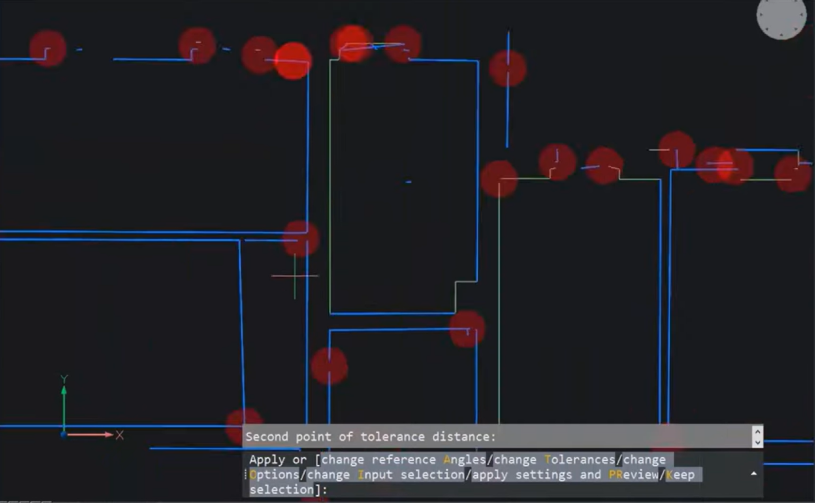
Enhanced Find Outliers user interface
The Find Outliers feature in BricsCAD V23.2 allows you to find entities outside a given search area. This command has been reworked and is available both as a standalone version and as part of the 2D Drawing Health command. When you inspect the outliers, you have the option to view either individual outliers or clusters of outliers.
How to use Find Outliers:
- Type "_findoutliers" command in the command line to open the dialog.
- Set a valid area by choosing the options in the dialog.
- Pick a base point and get immediate feedback as to the geometry outside the valid area. The number of outliers changes as the area changes.
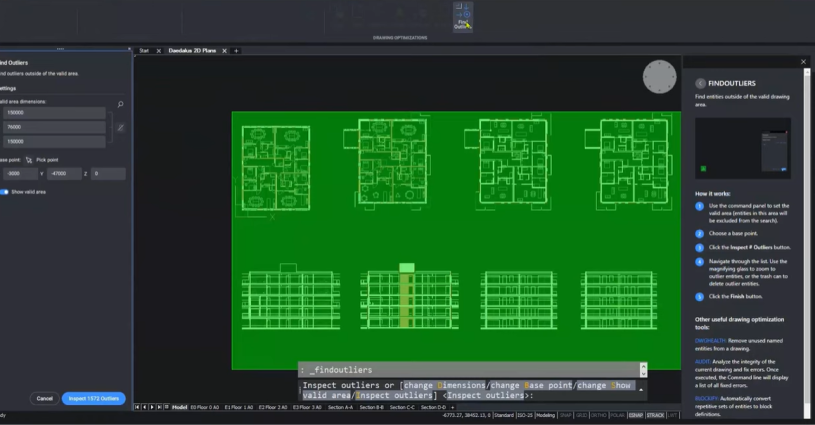
- Inspect the outliers to view either individual outliers or clusters of outliers to within the valid area or to the origin of the valid area.
- Move the outliers into the valid area.
- The number of outliers goes to zero.
Find Outliers in the Drawing Health Manager
The Drawing Health Manager now includes the Find Outliers feature, allowing you to preview the values of your valid area, and change them if necessary.
Find Outliers in the Drawing Health Manager:
- Choose the Drawing Health Manager tool.
- Click on the edit panel and add the Find Outliers option.
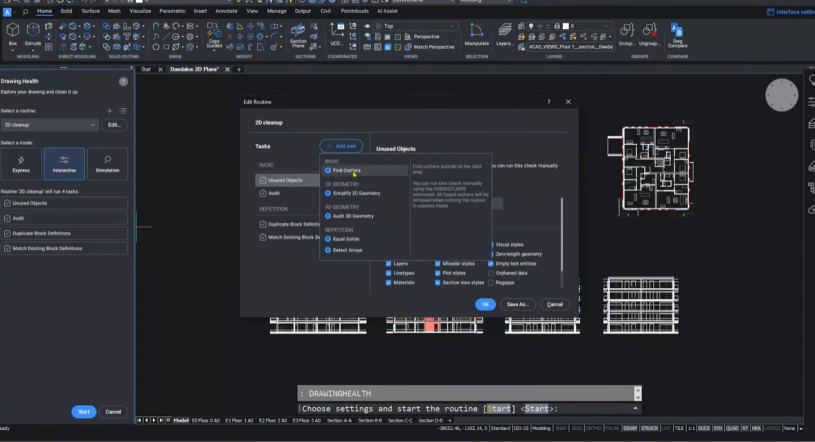
- Preview the values of the valid area and change them if required.
- Run the routine and examine, select, move, or delete the outliers.
Improved Dynamic Block Converter
We have made some exciting improvements to the PARAMETRICBLOCKASSIST command. Now, it supports even more dynamic blocks, and there are even more ways for users to control the process. When running the command, the new dialog will find dynamic blocks for you, and you can choose the conversion options you want and specify a suffix to distinguish your block from the original dynamic block.
- Type in "PARAMETRICBLOCKASSIST" in the command line or access the feature from the toolbar or menu.
- The new dialog box will appear with options to convert dynamic blocks. Select the conversion options that you prefer.
- Specify a suffix for the new parametric block to distinguish it from the original dynamic block.
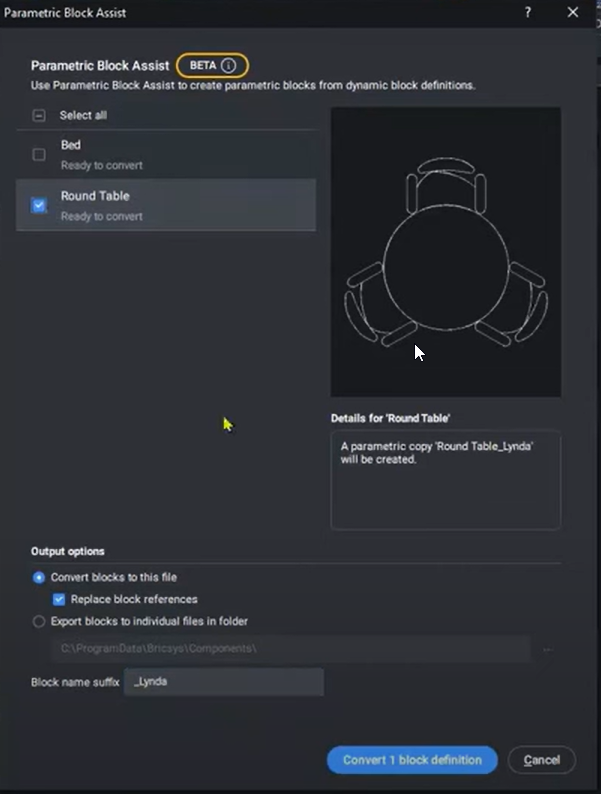
- Press "Enter" or click "OK" to convert the dynamic block to a parametric block with the specified suffix.
- To edit the properties of the new parametric block, select it and use the properties panel to make changes.
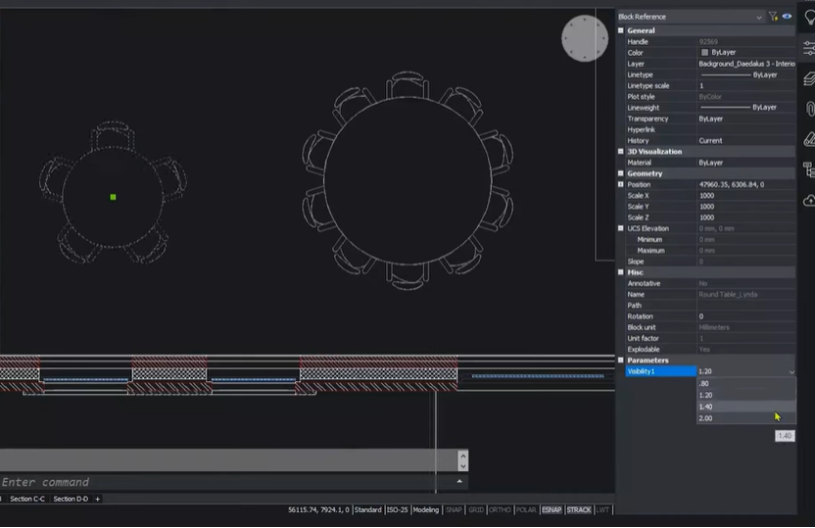
- The original dynamic block and the new parametric block with the specified suffix will appear in the drawing manager.
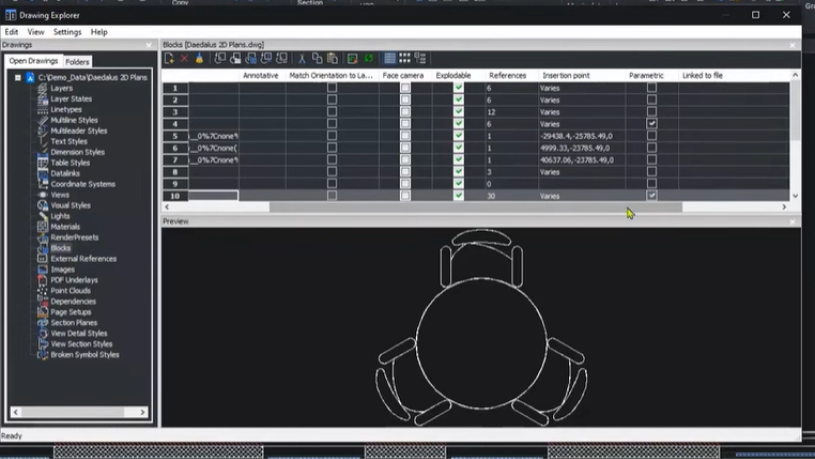
- Save the changes to the drawing and continue designing.
Improved ARRANGE Options
Another improvement we have made in V23.2 is to the ARRANGE command. In BricsCAD V23, we gave it a UI to make it easier to visualize changes to your design. We have now improved it even further, giving more gap options and easier visualization of the dragging grips. You can also lock values for one setting while either dragging or typing in a value for the other two.
How to use the Arrange Command:
- Type in "ARRANGE" in the command line or access the feature from the toolbar or menu.
- The new UI will appear with options to arrange objects. Select the gap options that you prefer.
- Use the dragging grips to move the objects to the desired location.
- To lock values for one setting, while either dragging or typing in a value for the other two, adjust the settings accordingly.
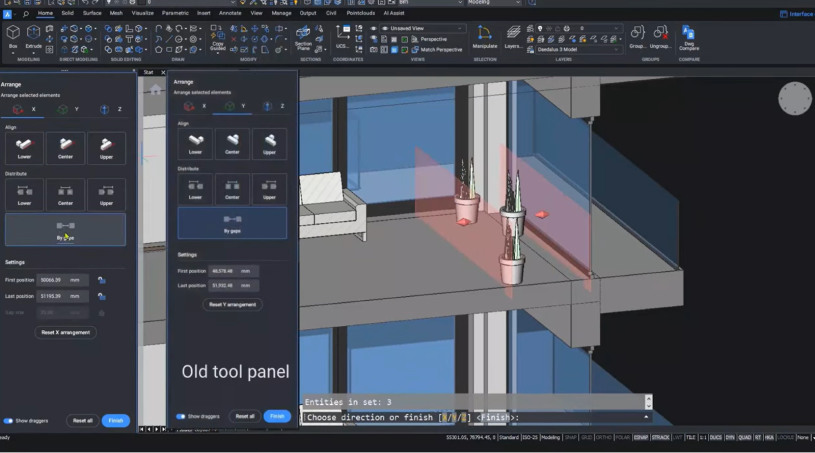
- Press "Enter" to apply the changes to the objects' arrangement.
- Save the changes to the drawing and continue designing.
Have you used tried the new V23.2 features and have some ideas or suggestions?
Fantastic! We love hearing your thoughts on BricsCAD® – all feedback is welcome, whether good or bad. The best way to let us know what you think about BricsCAD or the new V23.2 features is to send us a support request, and our support team will be happy to help.
Want more BricsCAD tips and tricks?
If you’re curious about what else you can do in BricsCAD, check out our YouTube channel where you can learn more about BricsCAD’s features and commands, or take a peek at the rest of the Bricsys blog.
